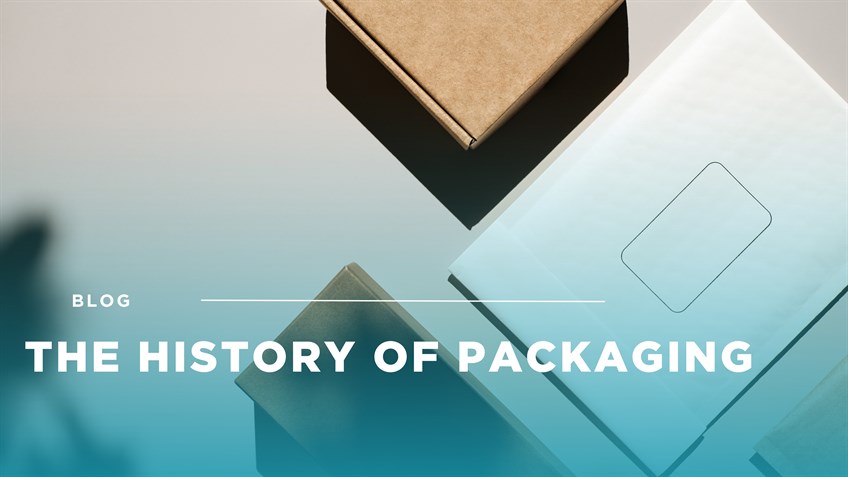The History of Packaging

Published date: 12 April 2024
Packaging, an essential part of businesses and individual consumption, has a long history which reflects human needs, technological progress, and environmental considerations. Like most things in today’s modern world, packaging has evolved over the years to what we recognise now.
Packaging originated in ancient civilisations during the early stages of trade. People would use natural materials such as leaves, reeds, and animal skins to protect and store their goods. Societies in Mesopotamia and Egypt developed basic packaging methods to safeguard and transport goods, emphasising durability and preservation, something that is still a primary focus of packaging today.
The Renaissance saw the arrival of paper and cardboard, which enhanced trade and commerce. However, the Industrial Revolution in the 18th and 19th centuries significantly transformed packaging. The demand for efficient and standardised solutions led to the adoption of tin cans, glass bottles, and paper bags for mass-produced goods.
The late 19th century witnessed packaging becoming integral to marketing and branding strategies. Businesses began investing in distinctive packaging designs to establish product differentiation. Logos and brand colours became synonymous with the products, marking a big shift in consumer culture.
The mid-20th century saw the emergence of plastics, revolutionising packaging with their durability, flexibility, and cost-effectiveness. Despite concerns over environmental impact, plastics became universal across industries, including food and drink packaging and consumer goods.
In response to environmental concerns associated with single-use plastics, there has been a growing emphasis on sustainable packaging. Biodegradable materials, recycled packaging, and designs aimed at waste reduction have gained prominence. Striking a balance between functionality, aesthetics, and environmental responsibility has become a central challenge for the packaging industry.
Advancements in technology and evolving consumer expectations continue to shape the future of packaging in the 21st century. Smart packaging, incorporating technologies like RFID and QR codes, enhances consumer information and supply chain efficiency.
The history of packaging emphasises human adaptability and ingenuity. From the use of natural materials in ancient times to the technologically sophisticated packaging of today, the journey reflects societal changes, economic shifts, and environmental awareness. Moving forward, the challenge lies in creating packaging solutions that are functional, visually appealing, and environmentally sustainable, finding a balance between human convenience and ecological responsibility.
To find your perfect packaging, contact Challenge Packaging today. All of our products can be tailored to your business for any bespoke needs, and with sustainability at our core shown in our recent carbon neutral to PAS 2060 verification. We’d be honoured to be your new packaging partner. Get in touch: https://www.challengepackaging.co.uk/contact-us/


Comments
There are currently no comments, be the first to comment.